|
Data Frame Properties
Data Frame properties will allow you to change a number of other
settings for the frame. To start, you can change the name of the
frame. Similar to the layers you can have multiple frames in a single
project. These frames can display different areas of the same province,
the whole country or even the world. You can change the background
color or even the projection (what ever that is…). Add Grids
(measurement) and Graticules (Lat/Long) to indicate measurement
locations and distances.
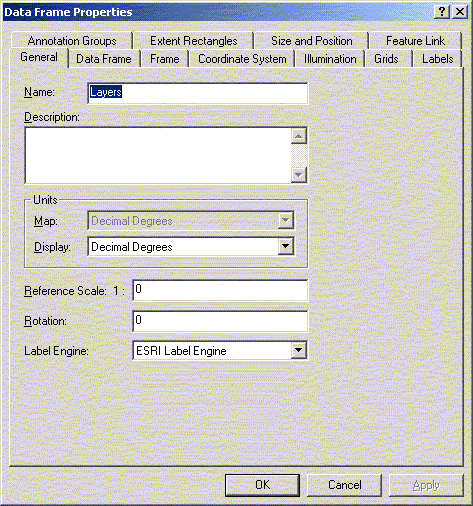
Changing the Look of your Map
Your lakes are probably some colour other than blue right now.
To change them to blue, click on the lakes symbol (or fill) in the
Table of Contents. A dialog box that allows you to change the fill
and pattern should open. Alternatively double-click the lakes title
in the Table of Contents. This will open the layer properties where
many more things can be changed including the symbology. Click on
the fill color to select the fill and border. Lakes are often represented
as a light blue with a darker blue outline.
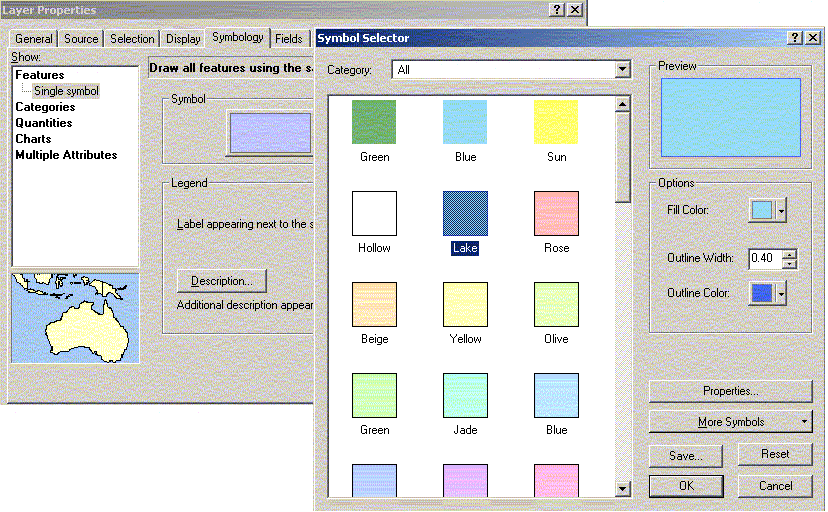
You can also have different values of a layer take on different
colours. For example, within the RHA.shp layer, you could have each
RHA take on a different colour. Open the layer properties by double
clicking on the layer name or selecting Layer Properties from the
context sensitive menu. In the layer properties under symbology
select categories in the dialog box with the unique values option.
Click on the “add all values” button to enter the RHA
values.

Another option is to display numeric values as quantiles with a
continuous gradient in the colour. You could group your RHAs by
premature mortality rate by choosing “Quantiles”, and
then choosing D_pmr as your classification field. Again, you are
given a choice of colour schemes, each colour representing a PMR
category.

Polygons are, obviously, not the only layers that can be edited.
Double-click on your roads legend, and you can change the size of
your lines. Points can also be edited, not only by colour, but also
by size, shape and symbol.
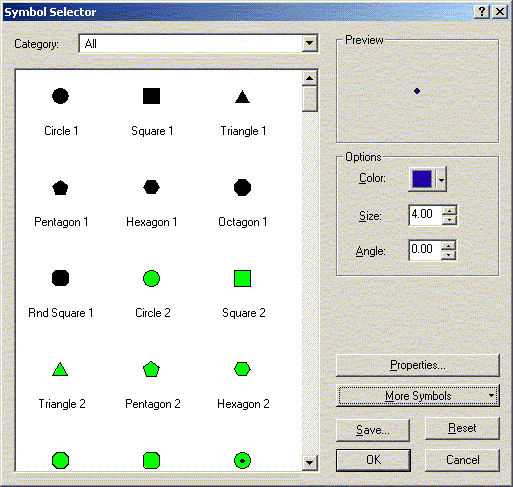
You can use the options for multicoloured layers for points as
well. If you wanted to group your schools by the lowest grade taught
at the school, you would choose Unique Value under legend type,
and then choose Low_Grade under values field.
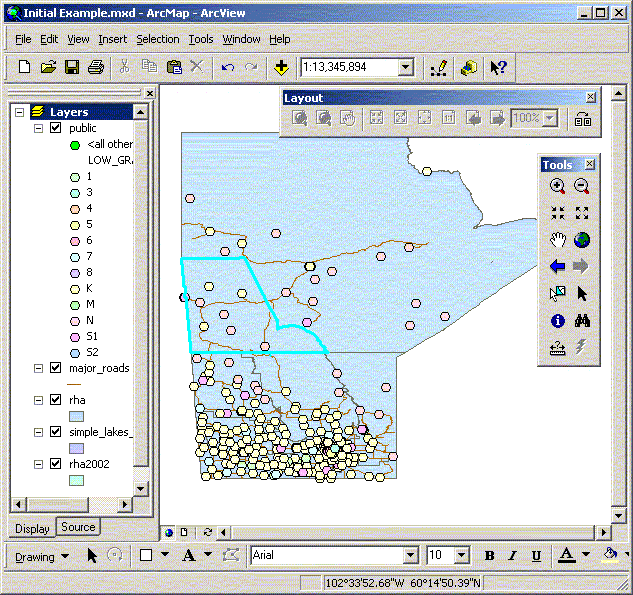
Notice how long the legend for public schools has become –
you can’t even see the legends for your other layers any more.
To fix this, click on the minus (-) beside the layer in the Table
of Contents. You should now only have a label for the schools, and
you should be able to see the legends for your other layers again.
If you want to export your map and have labels for your features
directly in your view, you can create them using the label menu
item from the context sensitive menu or by setting up the labels
in the layer property. You can also add the labels individually
by clicking on the “Label” button under the ‘A’
in the Draw toolbar.
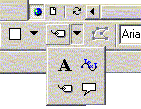
Options for label styles and placement position are found in the
layer properties.
The layer properties, as you have seen already, allow you to change
the properties of each layer. You should give your layer an appropriate
name since you can use the same shape file a number of times in
a single frame. This name will also be used for legend titles and
attribute tables (which will be mentioned below). This name does
not change the original shape (shp) file or name on your computer.
You can give the layer a definition and add comments to it under
Definition. A definition (e.g. ( [SLI] = “1” )) will
be applied to your whole layer. Selections, conversions, and other
processing will only be applied to the features defined in this
definition.
The General tab also allows you to specify the minimum and maximum
scale at which the themes will show up. This is useful for road
networks, postal code points, or in our example, public school points,
when viewed at too small a scale; they clog up a lot of Southern
Manitoba. Try changing the maximum scale (out beyond) for public.shp
to 1.5 million then zoom in and out around this scale.
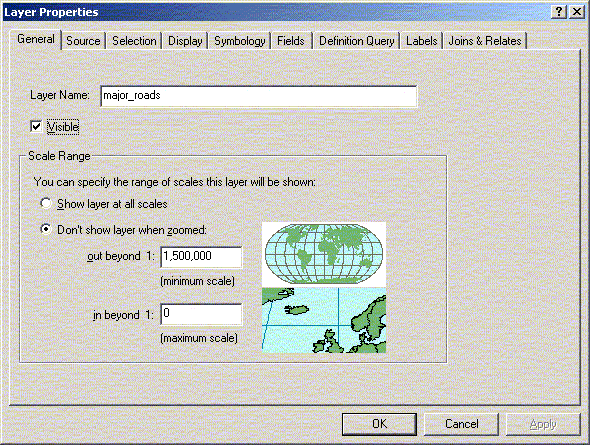
You can take selected portions of your theme and save them as new
shape files. If you wanted to create a map of Northern Manitoba,
you could select Nor-Man and Burntwood, and then under “Data”,
choose “Export Data” from under the context sensitive
menu for the RHA layer. You can then save the selected polygons
with a new name, such as north.shp, for future use in new maps.
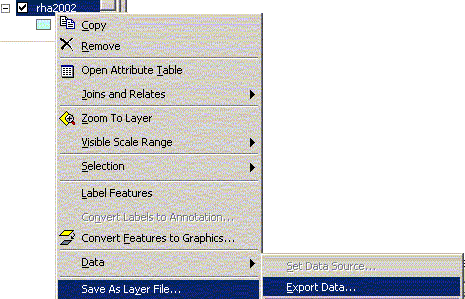
If you did not want to export your shape file you could limit your
layer using the definition property
"RHACODE" = '70' OR "RHACODE" = '80' OR "RHACODE"
= '90'
To unselect the selected features on your map, select the “Clear
Selected Features” from the “Selection” menu.
It will remove the selections from all portions of the map.
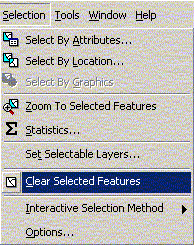
 Introduction
Introduction
 Basic Use: Data Frame Tools
Basic Use: Data Frame Tools |
NEXT
 Basic Use: Tables and Charts
Basic Use: Tables and Charts |
| 